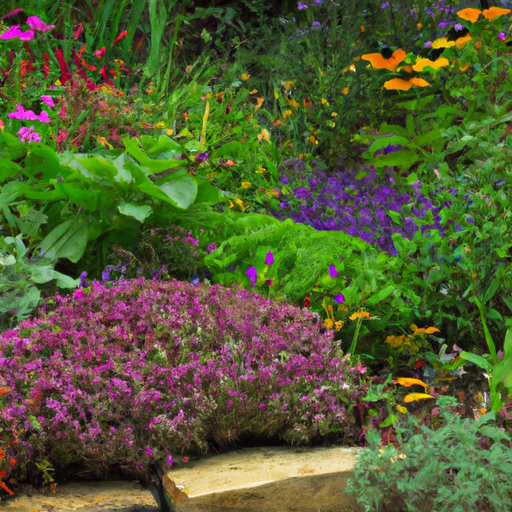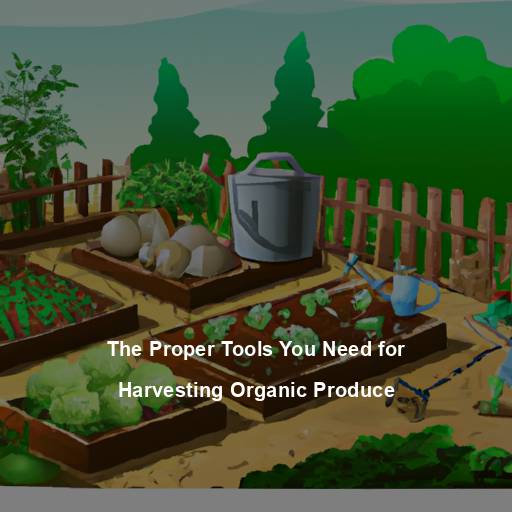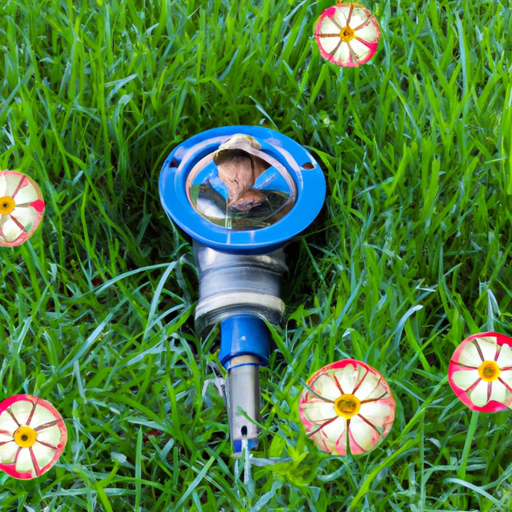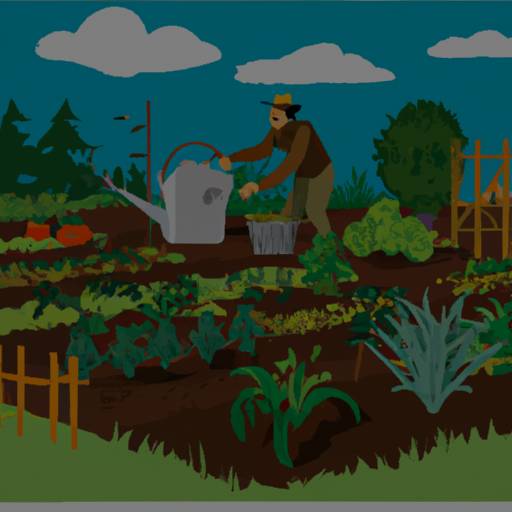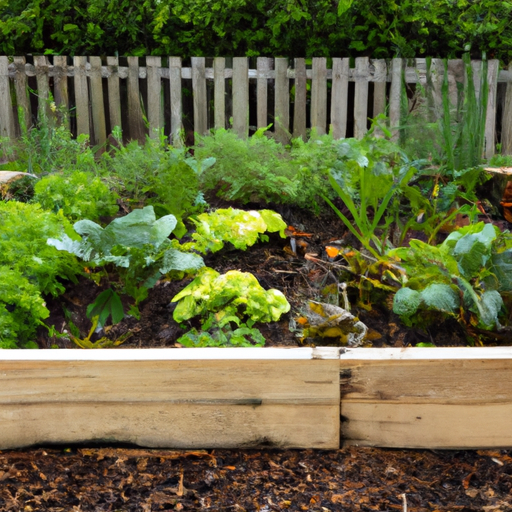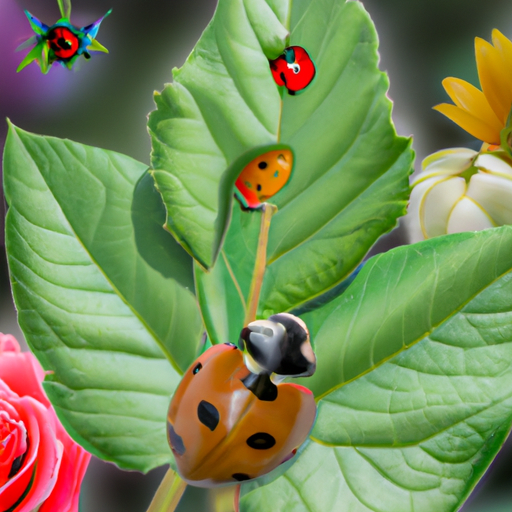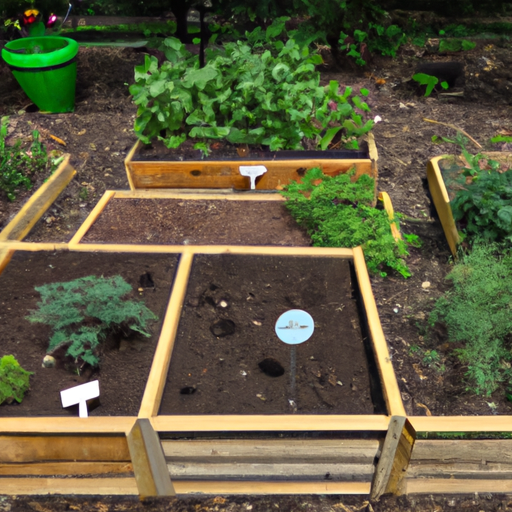Are you tired of dealing with pests and diseases in your garden? Companion planting might be the solution for you!
By mixing herbs and flowers together, you can create a natural defense system that helps protect your plants while also providing beauty and biodiversity to your garden.
In this article, we will explore the benefits of companion planting, as well as some tips and tricks on how to successfully mix herbs and flowers.
As a Master Gardener, I have seen firsthand the positive effects of companion planting in my own garden.
Not only does it help repel harmful insects and attract beneficial ones, but it also improves soil health by increasing nutrient availability and reducing erosion.
Additionally, mixing herbs and flowers together creates an aesthetically pleasing display that is sure to impress any visitor to your garden.
So whether you are a seasoned gardener or just starting out, read on to learn about how to mix herbs and flowers in companion planting for a healthier and more vibrant garden.
Benefits Of Companion Planting
Maximizing yields, pest control, improved soil health, and biodiversity are some of the benefits of companion planting.
When herbs and flowers are planted together, they complement each other’s growth patterns and help deter pests that could damage crops.
Additionally, certain plants can improve soil health by fixing nitrogen or adding organic matter to the ground. This creates a healthy environment for all plants in the area since it encourages beneficial microorganisms to thrive.
Companion planting also enhances biodiversity by attracting a range of insects and wildlife that contribute to pollination and natural pest control without resorting to harmful chemicals.
Overall, incorporating companion planting techniques into your gardening practices is an excellent way to boost yield while minimizing environmental impact.
Understanding The Interactions Between Herbs And Flowers
Understanding the interactions between herbs and flowers is crucial in companion planting. Complementary pairings can enhance each other’s growth, increase their yield, repel pests, and attract beneficial insects.
For example, basil and marigold make an excellent pairing as they both deter nematodes that attack roots. Similarly, dill attracts hoverflies that prey on aphids while also enhancing the flavor of carrots when planted together.
However, potential conflicts between certain plants should be avoided to prevent stunted growth or reduced yields. It is recommended not to plant fennel near beans or tomatoes since it inhibits their growth. Also, avoid planting mint with chamomile because it can stunt its growth due to its invasive nature.
Understanding these interactions will help you create a thriving garden filled with healthy plants that complement each other naturally without any intervention from pesticides or fertilizers.
Choosing The Right Herbs And Flowers For Your Garden
Understanding the interactions between herbs and flowers is essential before planting them together.
Now that we have learned about their compatibility, let’s move on to choosing the right combinations for your garden.
When it comes to mixing herbs and flowers, color combinations and fragrance pairings are crucial factors to consider.
For example, pairing lavender with purple coneflowers can create a beautiful monochromatic display while also offering complementary scents.
On the other hand, mint and marigold make an excellent duo as they both repel pests and add different shades of green and yellow to your garden bed.
Remember to balance plant heights, growth rates, and watering needs when selecting herbs and flowers so that they can thrive in harmony.
With these tips in mind, you’ll be able to mix herbs and flowers like a pro!
Tips For Successful Mixing And Planting
As a Master Gardener, I strongly believe that companion planting combinations can make or break your garden. Mixing herbs and flowers together is not just about aesthetics but also about creating healthy soil and attracting beneficial insects.
Like the saying goes, ‘you are only as strong as your weakest link,’ so it’s important to choose plants that complement each other rather than compete for resources.
One of the most common mistakes to avoid is overcrowding – giving each plant enough space will prevent disease and pest problems.
Another tip is to group plants with similar water and sun requirements together. By doing so, you’ll save time and effort in watering and fertilizing your garden.
Remember, successful mixing and planting is all about balance – understanding the unique needs of each plant will lead to a thriving ecosystem where everything works in harmony.
Maintaining And Caring For Your Companion Garden
As a Master Gardener, maintaining and caring for your companion garden is crucial to ensuring its success.
Choosing the right soil is essential in providing proper drainage and nutrient absorption for your plants. It’s important to research which type of soil is best suited for each herb and flower variety you’ve planted.
Watering techniques should also be considered as overwatering can lead to root rot while underwatering can cause stunted growth or even death.
Fertilizing should be done regularly but not excessively, as too much fertilizer can harm the delicate balance of your companion garden. Remember that different herbs and flowers have varying needs when it comes to fertilization so make sure to research before applying any products.
Lastly, don’t forget to monitor pest infestations and weed growth in your companion garden as they can easily disrupt the harmony between plant varieties.
Keep these tips in mind and watch your companion garden flourish with life!
Frequently Asked Questions
How Do I Know Which Herbs And Flowers Are Compatible With Each Other?
Ah, the age-old question of which herbs and flowers are compatible with each other. It seems as though every novice gardener thinks they can just throw any old plant together without consequence. But let me tell you something, my dear gardening friend: companion planting benefits are not to be taken lightly.
The right herb and flower pairings can do wonders for your garden’s health and productivity. So how do we know which plants work well together? Well, it takes a keen eye and some research, but fear not! As a Master Gardener, I am here to guide you through the process.
Let’s start by breaking down some common herb and flower combinations that have been proven successful in companion planting.
Can I Mix Annuals And Perennials In My Companion Planting?
Yes, you can mix annuals and perennials in your companion planting.
While there are benefits to both types of plants, it’s important to consider their design and layout when planning your garden.
Annuals provide quick bursts of color and fill gaps left by slower-growing perennials, but they require more maintenance and replanting each year.
Perennials have a longer lifespan and require less maintenance, but may take longer to grow or bloom.
Consider the height and spread of each plant when designing your layout to ensure that taller plants don’t shade out shorter ones.
Ultimately, choosing a mixture of annuals and perennials will give you the best of both worlds – vibrant colors throughout the season with minimal upkeep.
Will Companion Planting Help With Pest Control In My Garden?
Natural pest deterrents are a great way to control pests in your garden without using harmful chemicals.
Companion planting is one such method that utilizes the benefits of biodiversity to naturally repel pests and promote plant growth.
By strategically mixing herbs and flowers, you can create an environment where beneficial insects thrive and unwanted pests stay away.
Some examples include planting marigolds alongside tomatoes to deter nematodes or growing basil near cucumbers to ward off aphids.
Incorporating companion planting into your gardening routine can not only help with pest control but also improve soil health and yield better crops overall.
How Much Space Should I Leave Between Each Plant In My Companion Garden?
Spacing tips are crucial when it comes to interplanting strategies in a companion garden. The distance between plants can greatly affect their growth and yield, so it’s important to plan ahead before planting.
A general rule of thumb is to leave enough space for each plant to mature fully without overcrowding its neighboring plants. This usually means leaving about 6-12 inches of space between smaller plants and up to 2 feet or more for larger ones.
However, keep in mind that some plants may require more or less space depending on their specific needs, so always research the individual requirements of each species beforehand.
By spacing your plants strategically, you’ll not only ensure optimal growth and health but also create a beautiful and functional garden full of beneficial companions.
Can I Use Companion Planting In Container Gardening?
Ah, container gardening! A true challenge for the Master Gardener. But fear not, my fellow green thumbs, for companion planting can indeed be used in your container garden.
Of course, it all depends on the size of your containers and your watering techniques. Container size is crucial when it comes to companion planting as you want to make sure each plant has enough room to grow and thrive without overcrowding its neighbor.
And speaking of neighbors, you’ll want to select plants that have similar water needs so they can coexist harmoniously without one getting too parched or overly saturated.
So go ahead, experiment with different combinations of herbs and flowers in your container garden using the principles of companion planting – just remember to choose wisely and give them the space they need!
Conclusion
In conclusion, my dear fellow gardeners, the art of mixing herbs and flowers in companion planting is not something to be taken lightly. It requires a keen eye for detail and a willingness to experiment with different combinations.
But fear not! Once you have mastered this craft, your garden will become a veritable oasis of color and fragrance.
So go forth, my friends, and plant with abandon! Mix those annuals and perennials like there’s no tomorrow!
Don’t be afraid to get creative with your spacing and try out new container gardening techniques. And remember: when it comes to companion planting, the sky’s the limit.
Happy growing!
